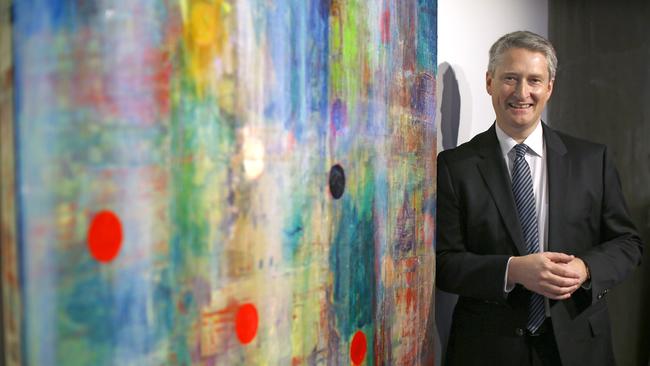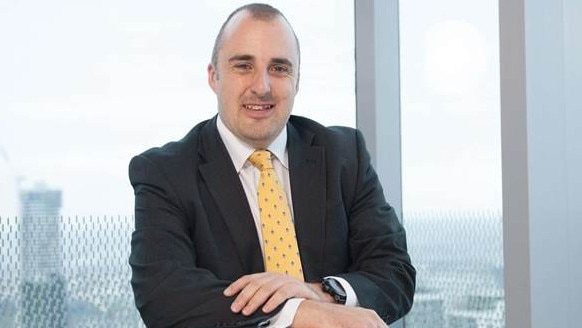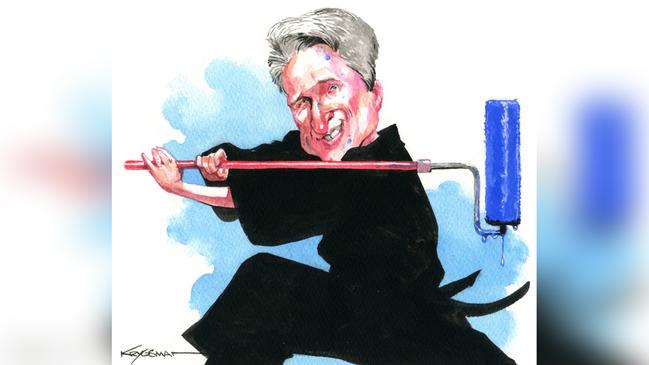
His appointment last year was an important step in that direction along with recruiting John Sedawie from Cbus to manage product development.
It is a touch bizarre that retirement is seen as the new mantra given most would see that as being the key purpose of superannuation from the start, and AusSuper for one sees its purpose as “to help members achieve their best financial position in retirement”.
Blackmore’s appointment, mirrored throughout the industry, can be counted as a structural change.
APRA and ASIC mid year will make their first policy statement on the industry’s stated retirement policies after last year’s compulsory retirement covenant.
In an interview, Blackmore says he broadly supports Allens partner Michelle Levy’s proposed financial advice reforms which lighten the regulatory burden and open the door for the funds to provide more guidance to members.

AusSuper has a panel of external advisers on top of its internal team.
Some 60,000 of the fund’s three million-plus members take active financial advice and just 15,000 of the 100,000 in retirement phase.
Next year another 30,000 AusSuper members will retire with 250,000 Australians and, in all, the fund expects 500,000 members to retire in the next decade.
The good news is member balances are increasing; the average male aged 55 will have a balance of $162,000, up from $118,000 in May 2018, and the average female of the same age will have $132,000 – up from $94,000.
Blackmore stresses the pitfalls of managing through cohorts, noting every individual is different and says the key data points outside super balances are owning your own home, health, retirement date and overall affluence.
That’s a wide field and member education is key for Blackmore’s 35 staff.
Blackmore sees the role of the consumer data right as being a key change for the industry, opening new sources of information at member discretion.
He says service are as important as new product development.
The industry backs the government’s moves for a statutory definition of superannuation, which will act to minimise the frequent meddling beloved by successive Coalition governments.
On retirement the emphasis turns from saving to drawing an income and spending.
Blackmore says the industry’s task is to work together to remove the hurdles.
Dulux chief endures
In a meeting with Nippon Paint chair Goh Hup Jin shortly after his company was acquired in a $3.8bn deal, Dulux boss Patrick Houlihan was asked two questions: What do you want to do and why?
The Nippon chair and son of Goh Cheng Liang – the founder of the 59 per cent owner of the Tokyo-listed company – responded “my job is to help you do what you want to do”.
Houlihan, a 34-year Dulux veteran, immediately realised he was under welcome new ground rules in the fourth ownership change of his long tenure.
Goh established his business in Singapore after World War II, selling paint left behind by Allied troops (just as CHEP started in Australia) and now controls the fourth biggest paint company in the world behind US-based Sherwin Williams.
Operationally, the takeover has worked seamlessly but not without an element of controversy. The Singapore Monetary Authority (SMA) last month charged three members of a local family with insider trading on the 2019 deal.
The allegation is Shae Toh Hock, who was in the Nippon corporate planning division at the time, told his sister about the impending takeover.
ASIC helped the SMA with its investigations.
Earlier this month, Nippon reported its results showing Dulux grew revenues and earnings before interest and tax by over 6 per cent and the company accounted for 18 per cent of Nippon’s revenue and 22 per cent of sales.

Australian and Pacific revenues were $2.3 billion on an operating margin of 12.5 per cent and total Dulux division revenues, including acquisitions, were $4.7 billion in 2022.
The Dulux brand is now owned by three different entities around the world: Akzo Nobel in Europe and Asia, PPG in Canada, and Nippon Paint (Dulux) in Australia and the Pacific, which means in some markets Houlihan now competes with Dulux.
The name itself dates back to early last century when ICI created the brand in recognition of its then partner, Du Pont and luxury.
To some it mirrors Houlihan’s own view of the industry – the marriage of chemistry and marketing.
His first job with the company was in the research lab under Doug Curlewis and the commitment to science remains, with 150 employed along with roughly the same number of marketers.
Houlihan is now also chairman of the Murdoch Children’s Research Institute and on the board of the Australian government’s Industry, Innovation and Science Australia.
In Australia, Dulux has a 50 per cent share and, along with Taubmans and Wattyl, the top three have 90 per cent.
Home paints is a resilient game and with 70 per cent of Australian homes over 20 years old, most people repaint every five to seven years resulting in long-term growth about 1.25 per cent a year – but with the post-Covid market growing at 1.3 per cent.
ICI was keen to keep Dulux when it sold its 62 per cent stake in what is now Orica, but it was a key earnings provider for the local company.
It was always an island to itself with the explosives division working with a handful of customers and the paints mob working with thousands through different marketing channels.
When Orica floated Dulux in 2010 it was worth $800m with a net profit of $70m, which grew to $3.8bn in value and $70m in earnings on sale in 2019.
The key to life under Nippon rule is the old Dulux Australia is considered a partner company with freedom to operate with total autonomy and accountability.
Some links remain such as former Dulux chief Peter Kirby being on the Nippon board.
For Houlihan this means continuing to grow his Australian base, leaving Asia to Nippon and having an open path in Europe.
As the head of a listed company in Australia these same doors were open; but as part of a bigger group Houlihan has more freedom to operate.
The question “should we do it?” changes to “we should do it”.
In the process Houlihan’s empire has doubled in size through the acquisition of France-based paint producer Cromology and its Tollens brand for about $1.8bn, and Slovenia-based JUB for about $200m.
The Selleys brand is the other leg to the expansion where Houlihan is able to leverage the Nippon distribution centres through Asia to grow sales in the adhesive market.
Houlihan has boosted its sealants business with the recent addition of Italy-based NPT.
The other parts of the empire, Yates, Lincoln Sentry and B&D roll-a-door, are still being pushed in the Australian market but are not being tagged for international expansion.
Earnings before interest and tax have increased from $223m at the time of the sale to around $320m.
The parent company may change but the Dulux team – as a rival used to say – keeps on keeping on.




With $25bn in net inflows last year the $274bn AustralianSuper fund is on a roll but for retirement boss Shawn Blackmore the key challenge is to get the fund focused as much on retirement as accumulation.